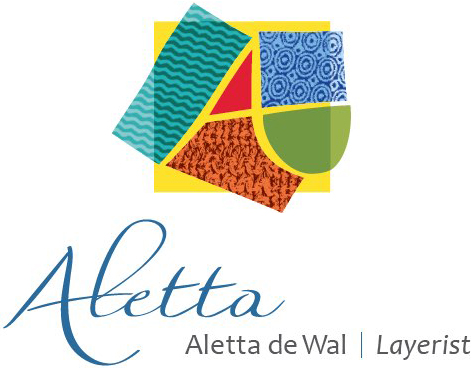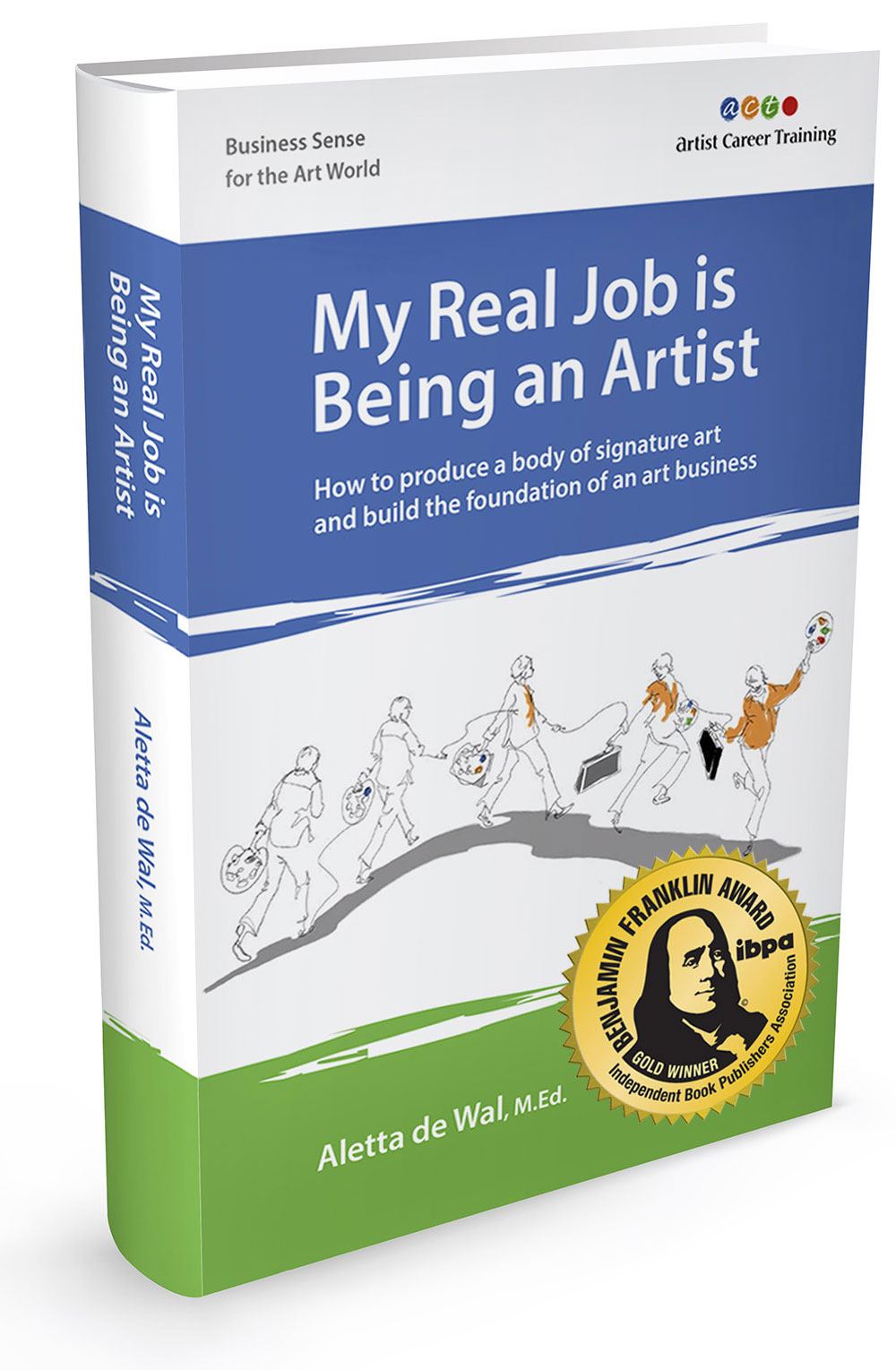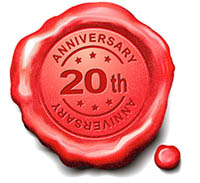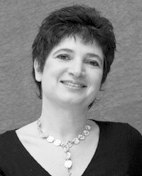Sculptor Karen Schmidt Communicates Spiritual Truths Through Form, Gesture, and Symbol
My primary goal in these interviews is to inspire you with stories of people who make a living making art and who consider it a "real job." Your art and your career may be on a different path, but there is always something to learn from the experience of your colleagues.
You can review interviews with past featured artists at http://www.artistcareertraining.com/featured-artists/.
There is often additional information on the recording that is not in this written interview. Inspire yourself and listen while you make art.
 Karen Schmidt ©Domenico Foshi www.karenschmidtsculpture.comKaren Schmidt's formal artistic training and natural aesthetic sensibility yields compelling work that is able to communicate spiritual truths through form, gesture, and symbol. Much of the imagery in Karen's work is derived from the biblical narrative, which both points to specific moments throughout the biblical story and also encompasses greater truths that speak to the realities of the human condition. While minimal in style, it is the gesture and form of each of her figures that enables every piece to visually articulate the emotional and spiritual elements of the stories they reflect thereby producing works of art that are rich in symbolic and multi-faceted meaning.
Karen Schmidt ©Domenico Foshi www.karenschmidtsculpture.comKaren Schmidt's formal artistic training and natural aesthetic sensibility yields compelling work that is able to communicate spiritual truths through form, gesture, and symbol. Much of the imagery in Karen's work is derived from the biblical narrative, which both points to specific moments throughout the biblical story and also encompasses greater truths that speak to the realities of the human condition. While minimal in style, it is the gesture and form of each of her figures that enables every piece to visually articulate the emotional and spiritual elements of the stories they reflect thereby producing works of art that are rich in symbolic and multi-faceted meaning.
Born in Los Angeles, sculptor, Karen Schmidt, studied fine art and education at California State University Fullerton, and earned degrees in both disciplines. Karen first worked as an elementary school teacher and later became a full-time homemaker while designing and creating banners and installation art for various churches. Beginning in 1996, she studied under Russian artist and sculptor Simon Kogan to acquire a foundation for understanding the classical approach to the human figure. Karen's sculptures have also been greatly informed by the work of such artists as Maillol, Bourdelle, Marino Marini, Barlach, and Henry Moore.
Since 1996, Karen's work has been selected and featured at a number of juried and invitational exhibitions nationwide. In 1997, Karen was awarded her first commission, "Maasai Mother and Child," and has since then worked primarily by way of commission. Other achievements include receiving a Bene Award for "Mary & Elizabeth" in 2006, as well as having her piece "Ugandan Sisters" selected for the National Sculpture Society's 72nd Annual Exhibition in New York, NY. Karen is a member of Christians in Visual Arts (CIVA), and the Association of Consultants for Liturgical Space (ACLS).  ©1997 Karen Schmit - Maasai Mother and ChildA.C.T.: What prompted you to start your professional art career? What makes an artist professional?
©1997 Karen Schmit - Maasai Mother and ChildA.C.T.: What prompted you to start your professional art career? What makes an artist professional?
My business started when I received my first commission "Maasai Mother and Child" in 1997, and five of that edition sold almost immediately. I didn't think of myself as a professional artist in business at the time, but I quickly realized that bronze sculpture is expensive to produce, so I needed to sell my work in order to cover my costs and continue doing what I love. Over the years I continued to study to improve my skills, and seek out opportunities to show and sell my work. I later made the commitment to be a professional artist.
A professional artist is one who creates high quality work with great commitment and focus, investing time and money to support both art making and everything else that goes into showing and selling art. This includes developing a plan, setting goals, registering the business, using business banking accounts and services, paying taxes, entering shows and exhibitions, and having an online presence and quality print materials. She knows when to seek advice and when to delegate.
A.C.T.: What is your artistic direction? What is your "life's work" as an artist and what legacy do you want to leave?
I love sculpting liturgical work because it plays a role in the spiritual life of people. I also enjoy sculpting portraits because of how they tell a story. My short artist statement says, "Karen Schmidt sculpts figures characterized by formal simplicity and symbolic complexity. Her figures exhibit a harmonious tension between peace and struggle, compassion and pain, joy and sorrow. Captivating yet understated, they draw the viewer into a story."
I want to be remembered for creating art that is exceptional in quality (beauty, design, craftsmanship), timeless in meaning, emotionally connecting, and spiritually transcendent. I want my art to encourage contemplation and deeper spiritual thought. My hope is that encounter with my art will enrich people's lives.
I also want to be remembered for my personal connection with people and communities and for encouraging other artists to pursue their art.
A.C.T.: What is your art business direction?
My focus has been in the area of liturgical art, which means working with liturgical design consultants and architects, and marketing to churches, hospitals, and people of faith. Primarily in the Christian context but my work is archetypal and speaks to all faiths, institutional as well as personal spiritual and humanistic connections with my subject matter. Most of my work is installed in homes and in sacred spaces. I have shown my work in several art exhibitions and also at liturgical conferences. I have a website as well. Most people, though, have either seen my work at conferences or come to me by word of mouth.
 © 2012 Karen Schmidt at Liturgical ConferenceThere were many areas of my art business that were on a professional level, but I started working with Aletta de Wal, and have truly "jump-started" in many new ways, and she has helped me tremendously with more focused goal setting. There were some holes in my professional tools and strategies. She encouraged me to stay with my liturgical work rather than follow the advice of others who told me to work to the market. I felt so affirmed, and her coaching has really empowered me to move forward authentically.
© 2012 Karen Schmidt at Liturgical ConferenceThere were many areas of my art business that were on a professional level, but I started working with Aletta de Wal, and have truly "jump-started" in many new ways, and she has helped me tremendously with more focused goal setting. There were some holes in my professional tools and strategies. She encouraged me to stay with my liturgical work rather than follow the advice of others who told me to work to the market. I felt so affirmed, and her coaching has really empowered me to move forward authentically.
I've been able to hire a business manager who has been able to implement my marketing strategy with new print and online promotional tools and has lifted the burden of the whole business and financial side. I am ramping up the exhibition strategy with her help and will be at the Loveland Invitational Exhibition in August. I am also going to be able to study in Italy - a goal I didn't expect to reach so soon!
A.C.T.: Please describe a typical day, and a typical month so readers can understand how you manage your time, money and energy.
After setting aside time for prayer and exercise, plus a few household duties, I arrive at my studio by 9:00 a.m., turn on the warming oven for the clay, and begin my workday with a conversation with my business administrator, who works from another state. She and I set goals and discuss the status of projects. I touch base with her throughout my day and also attend to correspondence with clients and potential clients.
Then I head into the studio to sculpt. I've found that short, intermittent breaks throughout a day of sculpting is essential to keep my body from over-use injuries (sculpting is hard work!), and it allows me to see the sculptures with fresh eyes and let the creativity flow.
Sculpting is not the only thing that takes my time during a typical month. I also make time for foundry visits, trips to the hardware store or the art supply store for materials, and I make sure to preserve time for research and inspiration through reading, museum visits to stay inspired, and fellowship with other artists. I also try to take a day or two away for silence and solitude.
I also spend time staying in touch with all the people involved - foundry staff, liturgical design consultants, church officials and commission clients.
A.C.T.: What peak moments have you had as an artist?
I've had so many - it's been such a thrill!
I sold my first sculpture three months after beginning my study with Simon Kogan, an accomplished Russian artist based in Olympia, Washington. A gallery in Olympia had an art show to feature the work of Simon's students, and I sold my first piece at that event. That was soon followed by my first commission, "Maasai Mother and Child." It helped me realize that I really had a gift of being able to sculpt.
Soon after, our family traveled to Europe, and I'll never forget the thrill of walking through Florence, overwhelmed with seeing the original art I had only seen in books and on screen; drinking it in and thinking, "I'm a sculptor! This is what I want to do."
One high point was the dedication of the half life-size "Holy Family" at St. Pius X Catholic Church in New Jersey in 2008. My dear friend, who had been the original design consultant on the project and had introduced me to the liturgical art world, died of breast cancer before the project was completed. She had passed the baton to another consultant, and the building was completed, and my sculpture was installed. The dedication and blessing was deeply moving for me. I talk about this piece in a short video that will be part of a documentary by John Schmidt Productions.
In 2010, I presented the 12" clay maquette for a life-size sculpture, "Madonna of Compassion," to the building committee at St. Mary's Hospital in Richmond, Virginia. Their response was overwhelmingly positive, and connecting with the people involved on the project was personally and professionally enriching.
 © Karen Schmidt Madonna of CompassionSixteen months ago I moved into a warehouse/studio after working from a small home-studio, which I now rent out to cover costs of my new space. I now have the opportunity to sculpt larger work and to have greater focus.
© Karen Schmidt Madonna of CompassionSixteen months ago I moved into a warehouse/studio after working from a small home-studio, which I now rent out to cover costs of my new space. I now have the opportunity to sculpt larger work and to have greater focus.
Working with Aletta, and all that has come through that have been peak moments as well. Previously, marketing was a big black monster that clouded my thinking and I was making slow progress but I wanted to move more confidently and faster. One great result was hiring a business administrator to take some of the administrative work away and implement the marketing strategy. Now I can focus on the relationships and having the conversations Aletta describes as the core of art marketing.
A.C.T.: How do you define success and how do you celebrate it?
I define success as having the resources to do what I love doing, namely sculpting, showing my work, and teaching others about art. I consider every sculpture sold to be a great success because it brings beauty into the lives of people who commission and buy the piece, as well as the lives of others who see my work.
Also, I am successful when I find a good balance between the practical, relational, and creative aspects of my business; when I delegate what should be delegated, and invest my time wisely.
Also, thanks to a recent commission, I am able to embark on a study tour of Florence with my teacher Simon Kogan and other artists. That is a great way to celebrate success!
I celebrate success by sharing it with my family and community and often by enjoying a special event like dining with my husband.
 © 2012 Karen Schmidt "Prodigal Son"A.C.T.: What obstacles have you encountered in your art business and how have you handled them?
© 2012 Karen Schmidt "Prodigal Son"A.C.T.: What obstacles have you encountered in your art business and how have you handled them?
- Lack of skill: My first commission came as I was just starting to sculpt, so from the beginning I have felt the drive to develop my skills through lessons, books, workshops, and private study. I have never lost that habit of continuing to be a student of art.
- Lack of Business Knowledge: Regarding the non-sculpting part of my art business, I had to start from scratch. An education in Photoshop, bookkeeping, taxes, marketing, and simply staying organized has been a challenge I've had to overcome in recent years. Advice from Aletta, fellow artists, consultants, and my business manager is essential.
- Lack of Confidence: I think most professional artists struggle with this at times throughout their careers, especially when we are breaking through to a new level because we have not done that before. It's something you have to sit through and often produces something wonderful in the art. Sometimes we also have to work through personal baggage. I've had to face my fears of disappointing others and of taking risks with my business. There are a number of books on this topic that have helped me in this area, and especially community and support from my peers in the art world.
- Outgrowing my small studio space: In 2011, I took a big step and moved out of my small studio workshop in my home and leased a 1300 square foot studio.
- The tough economy: I have had commissions take longer to solidify and fund. I see this as an opportunity to work on my creativity and business strategy. I've rented my old studio space to graduate students to earn money to cover the cost of my new studio; I'm exploring less expensive mediums, like ceramic clay, to develop more affordable artwork; I'm investing in a business manager and A.C.T. consulting, which will enhance my marketing materials, strategy and implementation.
 © Karen Schmidt "Holy Family"A.C.T.: What opportunities has a professional approach to your career brought you that you might otherwise not have had?
© Karen Schmidt "Holy Family"A.C.T.: What opportunities has a professional approach to your career brought you that you might otherwise not have had?
- I have been able to study with Simon Kogan, and I seize every opportunity for development as an artist.
- I am able to enjoy fine art more fully because I have become a student of art history.
- I've developed a deeper faith due to learning a symbolic language, which gives expression to things beyond words. Art helps me embrace mystery.
- I've met extraordinary people and had really enlightening conversations with people who see my work on display.
- I've traveled across the United States and to Europe.
- I'm more familiar with who I am, how I'm wired and my creative process. Art pushes me in new directions, and I am no longer playing it safe.
- I have an exciting journey ahead of me, even as my husband and I are in empty nest mode and looking ahead to his retirement.
- I have a tremendous sense of satisfaction and fulfillment about what I do.
A.C.T.: Who are your role models and mentors? What was the best advice they gave you?
- Simon Kogan in workshops. I studied with him in Washington at the beginning of my career and several times since then. He laid the foundation for my understanding of the structure of the human figure that permeates my entire body of work. Simon also introduced me to early twentieth century modern sculptors who have influenced me, like Maillol, Bourdelle, Marino Marini, and Henry Moore.
- Historical mentors through books, including Henri Nouwen, Alejandro Garcia-Rivera, and John A. Sanford have influenced me in areas of faith, life, and beauty. I also find great wisdom in the Rule of St. Benedict. I've explored Jungian psychology and looked at it from a Christian perspective.
- Aletta de Wal is someone I greatly admire, because she is an artist who has an expert business sense. She has overcome significant obstacles in her life and encourages others to do the same. By taking me seriously as a liturgical artist with something unique to offer, she has given me greater confidence as a person and as an artist.
 Schmidt Mind map + vision boardA.C.T.: What is your art marketing strategy? What promotional materials and actions do you use most often?
Schmidt Mind map + vision boardA.C.T.: What is your art marketing strategy? What promotional materials and actions do you use most often?
When I started working with Aletta, she instructed me on how to create a vision board, mind map and S.M.A.R.T. [Specific Measurable Attainable Realistic Timed] Goals. I also identified the best audiences to target, namely liturgical design consultants, architects, and other liturgical artists, and identified what they are looking for. Next we developed art marketing strategies and actions to reach my goals and achieve my vision. Now I'm developing a body of new promotional material, including website, brochure, business card, a book and videos, that will distinguish my brand, which is a fine artist of deep faith, who brings meaningful, symbolic sculpture to devotional spaces.
My business manager will help me implement a cohesive communication strategy that utilizes in-person, phone, and print avenues of building relationships with my mailing list, which is made of about 400 individuals. With Robin Sagara's help we have redeveloped my web site. I have not implemented social media outlets yet, but it is part of my plan this year.
The primary sources of commissions for me are:
- Personal relationships
- Word of mouth, friends of friends
- Previous clients with whom I maintain long-term relationships
- Donating sculptures to non-profit organizations for auctions
- Liturgical Design Consultants
- Association of Consultants for Liturgical Space trade show
- Conference venues at which design consultants attend
- Presentation of commissioned artwork to the recipient at a large event
- Advertising in publications targeted for my audience
- Networking through Association of Consultants for Liturgical Space
- Exhibiting at Loveland
A.C.T.: What is your business model?
My business model is to work with individuals or organizations that want to commission an original work of art, or to purchase from an edition of a finished sculpture, or to request an enlargement of a finished sculpture. Usually the process from initial conversation to installation takes several months or a few years. Unless the commission requires a one-of-a-kind work, I typically do editions of nine, or in special circumstances 20-30. The portraits I sculpt are one-of-a-kind.
I exhibit my work at conferences and exhibitions, mostly. Here I find the right audience for building a mailing list and connecting with consultants, architects, organizations and individuals interested in buying artwork. I also enter online exhibitions that show religious art. © 2012 Karen Schmidt SculptingA.C.T.: What business systems do you have?
© 2012 Karen Schmidt SculptingA.C.T.: What business systems do you have?
Just in the last several months have my business systems taken shape. As much as possible I delegate these kinds of functions to Rebecca Fort, my business manager, which frees me up to make art and build relationships. In our studio we utilize Quickbooks for accounting, Google Documents for record-keeping and budgeting, Gmail Contacts for our contact list, Paycycle for payroll, and we use Squarespace for our website which is easily updated with a blog structure. We use Dropbox to share files, and Evernote to share receipts. We have just acquired a merchant account that will allow me to take credit card payments, and I consult with my bank and my CPA for tax and finance concerns.
I seek to streamline these processes as much as possible and to find the simplest most economical ways to keep my business running and doing what it is meant to do: enable me to create and sell art.
A.C.T. How do you price your work? What is your art purchase policy?
With Aletta's help, I have created a consistent pricing formula that takes several factors into account when determining the price of a sculpture, including overhead, time in the studio sculpting, hard costs of clay and materials, foundry costs, any shipping or rush costs that might be required and installation, my skills level and past sales.
I have contracts that include a payment policy in place that I provide clients, which outlines my position on returns, damages, alterations or copies of the art, and conservation.
On commissions I charge half of the price when I begin sculpting and half when the sculpture is completed but hasn't left the foundry. The sculpture is shipped and installed when the client's payment has cleared.
A.C.T.: What legal measures do you take to protect your work?
I am currently applying for copyrights for my sculptures. Also, my contract states clearly that I own the copyright on all my art, and the purchaser must ask permission to use the image of the work in any way. Every detail is spelled out, and Aletta helped me on some of the details.
I have never had to take legal action but I have had to remind people that I am generous but please ask first so we can work out a mutually agreeable arrangement.
And lastly, I have a great liability insurance policy.
A.C.T.: What changes have you experienced in the art market and how have you navigated them?
Due to the tough economy, it is taking longer for organizations to raise the money they need for building projects and artwork. I have experienced delays before, but the delays are longer, and there is a hesitancy to buy.
I've had the experience of having a meeting and thinking it was all done. Then people hesitated. I don't spend money until it's in the bank. A contract is not done until it's signed and delivered.
I have pursued professional counsel to make sure I'm spending my time and money in the best way, especially when it comes to promoting my business. I'm using this time to sculpt more, build relationships and network with artists. It takes more courage, but I am watching it pay off.
I think the economy is starting to rebound, and there are still people with money to buy art. I'm not using the economy as an excuse. I've trimmed whatever I can, and I am taking the steps I can, while remaining optimistic.
A.C.T.: What advice would you pass on to emerging artists? to mid-career artists? who want to succeed in any economy?
It is tough in a slow economy, but the economy is not an excuse for getting lazy. That gets you into a downward spiral. Now is the time to grow in your skills and knowledge. Develop your signature style, produce a body of work, and have your best work out there to keep your reputation high.
Fewer dollars to go buy art should motivate us to show only our best work and go the extra mile in developing and nurturing relationships with our business networks, clients and potential clients. We must stand above the crowd in our business practices, like prompt communication, sticking to deadlines, having professional materials, and being courteous.
Keep up with what's happening in the art world and what other artists are thinking and talking about, even if you don't agree with their world-view. I subscribe to HuffPost Arts and Artistaday because I think we should be able to engage in intelligent, thoughtful dialogue with others who are different from us. I believe it all enhances our creativity.
As you grow in your career, delegate everything but your artistic genius as Aletta advised me. Don't get bogged down in those aspects of your business that you were not born to do. Make the investment to delegate it to someone else, and your business will be better for it. I started with someone 5 hours a week, then 10 and now my business manager works for me 20 hours each week.
Don't be afraid to ask for advice. I have never regretted spending money on expert advice. I have only regretted that I didn't do it sooner. Learn the business and marketing skills from Aletta and the team at Artist Career Training so that you are ready as the economy improves and more people are buying art. Call Aletta! She will be able to assess where you are and recommend a program in A.C.T. that fits where you are in your career. Working with her has been invaluable!
Call Robin Sagara for help for a well designed website and keep it current.
A.C.T.: How has your involvement in The Learning & Product Expo: Art, one-to-one coaching furthered your career? How you feel artists can benefit from the types of programs, services and products we offer at Artist Career Training and The Art Business Library?
I'm very grateful for my interaction with Artist Career Training. In the Jump-Start Your Art Career package, I clarified who I am as an artist, learned what I am doing well, and what areas need work. I learned that I had moved from amateur to emerging artist and what I needed to focus on to go further. Aletta gave me the tools and guided me through the process that gave me the big picture as well as the specific areas that are necessary to establishing S.M.A.R.T. goals and what needs to be done to be a professional artist. She was easy to talk to and very affirming of who I am as a person, and artist, and a business woman. I felt seen and heard; and her guidance was tailor made for me and my situation.
Soon after, I attended almost every workshop Aletta taught at the Learning & Product Expo Art in Pasadena. She is a great teacher and offered so much valuable information that I am still referring to my full notebook of notes. The knowledge and insight I gained, plus working with Aletta on one-to-one coaching afterward, has boosted my confidence and guided me in important career decisions, strategizing, goal setting, and help with the step-by-step process to achieve success. Aletta provides accountability, which as a self-employed artist has proved to be invaluable. I delegate a lot of my business tasks but I understand them and know what I want.
Thanks to Robin Sagara, I am developing a more effective website that will fit within a marketing strategy that we are in the process of articulating.
One of the first things we did together was to create a vision board - what fun! As I look at the things that are important to me, and that I want to accomplish, I am amazed to see so many goals already achieved: With Aletta's help I was able to work out a fair pricing strategy, and contract, and negotiate a large commission and other proposals which has allowed me to hire a business manager and later this year study in Florence, Italy - two goals I thought would take years to accomplish. And amazingly, I now have more time to sculpt. The time I'm spending on the business and marketing is what only I can do, and it is focused and fruitful.











